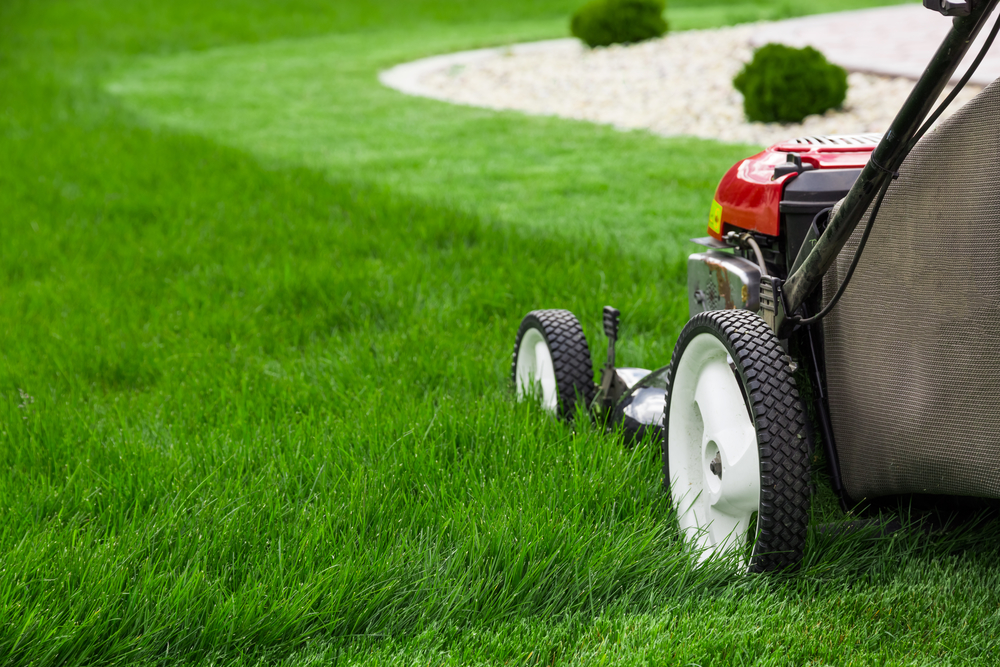It’s the time of Spring Cleaning around the home, indeed I was listening to Sean Moncreiff on Newstalk the other day and he was interviewing a stylist who was encouraging women to clean out their wardrobes so that they could (a) see what they have (b) utilise things which are maybe tucked in at the back and (c) throw stuff anyway they don’t use….and this got me thinking ,are we as sentimental when it comes to the garden?

Do you gather up old tools, gadgets and things without putting them to use. Did you buy a push lawnmower once and think ‘from now on I’m gonna cut the lawn with this and get fit…’ In the end up you used it twice and then hung it up in the shed as a lasting memory to your irrational purchasing?? Well now is the time to clean up the shed, garden and garage!
First thing to do is to empty the shed….yup, bring it all out, lay it all out in front of you and then you can see what you have. Firstly if you’re not using it – someone else will! So think about donating your spare tools, machinery, pots, canes etc to a local gardening group – such as your nearby Primary School, Community Garden or Mens Shed project.
Then with all your hand tools left, sharpen and oil them… a sharp knife cuts bread handy, a sharp spade cuts through soil just as handy, a well oiled pair of pruners works faster and better than a rusty pair. If you have 2 rakes, 1 with a broken shaft… donate it to the Mens Shed as they’ll put a new shaft on it and make a great job of it.
When you have a great clear out it removes the first problem of gardening – the hassle of getting the right tool out of the shed. When the tools are organised you can see what you have – and what you don’t have!
However we do have some sentiment to many of our garden tools, many a time I’ve been presented with the wonkiest of spades to be told ‘use my mother’s spade for that’…. a lovely thing to keep, to treasure… but not too use. Keep them old tools, with their memories up on the wall, treasure them but don’t make them part of your toolkit.
Now around the garden growth is in full swing, shoots of perennials are poking through the ground, deciduous trees are leafing up, roses are coming into leaf, hedges are coming into life. So now is a time to clean up all the old growth from last year, so old stems, old flower heads, old leaves get them all cut back, gathered up and added to the compost pile. We had encouraged you to keep these on to provide habitats for over-wintering beneficial insects in the garden, but now is the time to clear these all away to allow the light to reach down to all the new fresh shoots.
The single most beneficial thing you can do to your garden is to feed the soil, a simple old-fashioned act of spreading some well rotted manure around the garden soil has umpteen benefits to you and your plants, ranging from making it easier for you to weed, increasing disease resistance in plants and reducing watering and feeding. Now for many of us getting a link-box of manure dropped off at the house is not possible, and this is where the great folks in the garden centres come in. Every garden centre about sells bags of well-rotted farmyard manure. This Manure is 2 years old, free of straw and sawdust, has little smell, and is easy to handle as it’s in nice clean bags… and the garden centres will generally deliver handily enough too. Use a bag to 2m2, so a nice 3inch thick layer spread as evenly as possible around roses, shrubs, plants etc. The biology in the manure is what makes it so special, far better for the soil than any of the bulk composts you can get.
A simple easily sourced form of organic matter I’m making great use of at the moment is coffee grinds. Old coffee grinds are wonderful when planting potatoes, for spreading around strawberries and raspberries and for around roses due to its acidic properties. Also a light sprinkling around soft leaved plants such as your Hostas will deter slugs. The nutrient value of coffee is small (typical NPK would be 2.3-0.06-0.6), compared to fresh manure of NPK 6-3-7, so the benefits of coffee comes from its role in being organic matter for the soil, and its role as a soil amendment. I’ve found every coffee shop I’ve approached more than obliging to ‘donate’ you their coffee grounds – you just have to be consistent in collecting it. I find a Monday a good day to gather buckets after a busy weekend, but for bigger cafes you will need to gather each day.
For the more technical minded amongst you the carbon ratio of used coffee is about 24:1 so the small amount of Nitrogen is fairly available, and is released over a short/medium period. Soil will generally acidify over a period of time, due to weathering rock and rain, and as such an application of 25g/m2 of Lime is required to maintain a stable pH (depending on soil buffering capacity), application of coffee and its associated acidifying properties will increase this liming requirements slightly, to 35g/m2 per year (typically).
So to summarise…This week, get the shed cleared out, get the garden tidied up and mulched and start gathering up all the coffee grinds you can get!
Article by
Gareth Austin MSc. MCI Hort
Gareth Austin Horticultural & Media Services
Providing professional horticultural solutions for a challenging world
www.garethaustin.com
0877803991 from UK 00353 877803991
Twitter & Facebook & LinkedIN